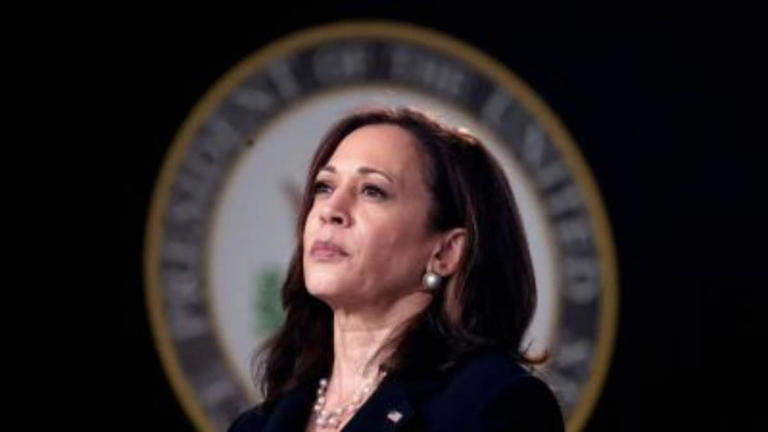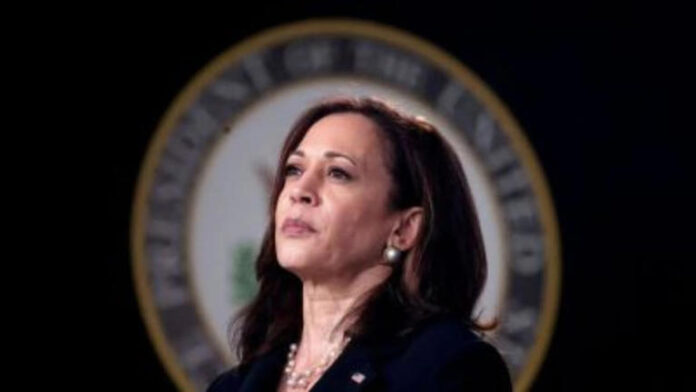Even though she lost the 2024 presidential election, Kamala Harris, former Vice President, is still the Democrats’ first choice for the 2028 nomination, based on current polls. Her continued popularity indicates her lasting presence in the party and leads to a potentially exciting primary season.

Following the 2024 presidential election, the Democratic Party is already eyeing 2028, with recent surveys showing that former Vice President Kamala Harris is still a popular pick among Democratic voters for the next presidential nomination. Although she lost to President Donald Trump in 2024, Harris’s ongoing dominance in these early polls speaks to her lasting influence within the party and questions the future of Democratic leadership.
Harris’s Standing in Recent Polls
A Morning Consult survey conducted between November 15-17, 2024, revealed that 43% of Democrats and Democratic-leaning independents would support Harris if the 2028 primary were held today. This places her well ahead of other potential contenders, with Transportation Secretary Pete Buttigieg receiving 9% support and California Governor Gavin Newsom at 8%.
MORNING CONSULT PRO
Likewise, as of mid-November 2024, a Puck News/Echelon Insights survey identified 41% of potential Democratic voters supporting Harris for the 2028 nomination. 8% of this poll voted for Newsom, while 7% of the poll chose Pennsylvania Governor Josh Shapiro. Other names, including Minnesota Governor Tim Walz and Buttigieg, each held 6% of the vote.
New York .
Evaluating the Support Base
Harris’s support seems strongest among certain groups within the Democratic voter base. The Morning Consult poll pointed out that a majority of Black Democrats (60%), young voters between the ages of 18-34 (54%), and non-college-educated voters (52%) support Harris. On the other hand, her support among white voters and those with greater degrees of education is relatively weaker, with approximately a third of college-educated Democrats supporting her.
Considering the 2024 Election Result
The 2024 election resulted in Harris winning 226 Electoral College votes to Trump’s 312, with Trump also winning the popular vote and sweeping battleground states such as Pennsylvania, Michigan, Wisconsin, North Carolina, Georgia, Arizona, and Nevada. In her concession speech at Howard University, Harris called on her supporters to “respect the results” and spoke optimistically about America’s future, saying, “The light of America’s promise will always burn bright.”
The Path Forward for Harris
In the aftermath of the election, speculation over Harris’s political future has grown. Some have proposed that she run for governor in California in 2026, particularly with Governor Gavin Newsom being term-limited. Nevertheless, being governor might complicate a future presidential run, with the added requirement of juggling state duties and national political aspirations.
The Broader Democratic Landscape
The Democratic Party is entering an era of soul-searching and possible rebirth. The 2024 loss has fueled debates regarding the party’s future direction, leadership, and how it can reconnect with a wider electorate. Individuals such as Senator Bernie Sanders continue to shape the party’s progressive flank, while others call for a more centrist strategy to court swing voters.
Latest news & breaking headlines
The next 2028 primary is likely to be closely contested, with a wide range of possible candidates from different ideological factions. Open competition might become a turning point for the Democratic Party to reshape its identity and agenda, enabling voters to select between centrists, progressives, and other groups.
New York Magazine
Conclusion
Although the 2028 election is years off, the preliminary polling numbers place Kamala Harris as a major player in the Democratic Party’s future. Her consistent support among pivotal groups demonstrates both her long-term popularity and the party’s difficulty in bringing its base together. As the political environment continues to shift, the Democratic Party’s strategy for choosing leaders and setting policy agendas will be essential in determining its fate in the next presidential election.

